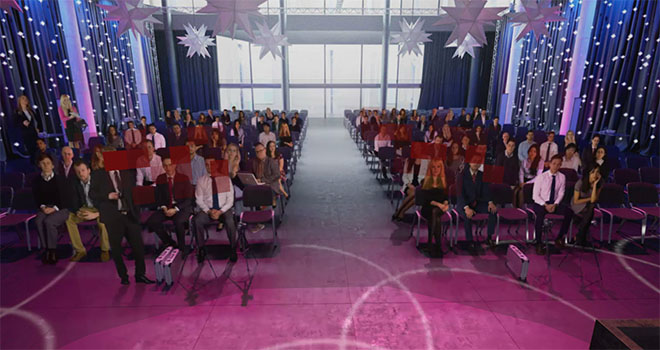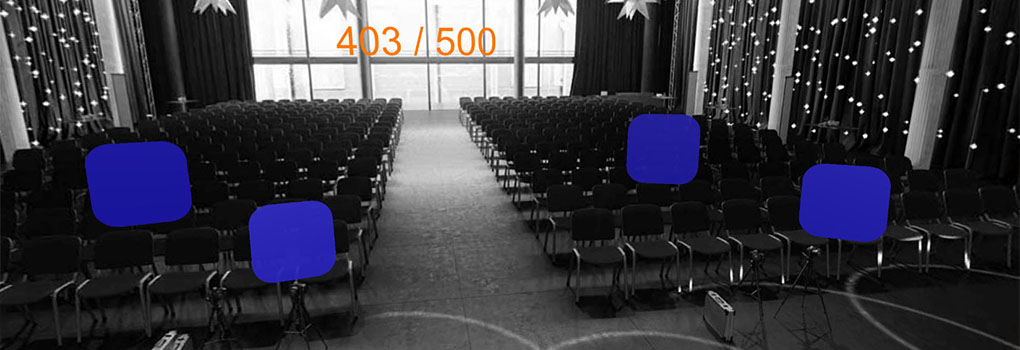Improve your Eye Contact with Practice in VR
Updated June 15, 2023 - Dom Barnard
Sustained, meaningful eye contact is a great way to enhance your impact as a presenter and persuade others. It can help you build rapport with your audience, keep them engaged in a presentation and even improve your chances of selling your products or services.
Benefits of great eye contact
- Establishes a connection with your audience
- Improves your concentration
- Projects authority and confidence
- Facilitates engagement with the audience
The benefits are clear, however measuring and practicing eye contact is difficult, or at least it was till recently. Virtual reality (VR) has proven to be an effective method for measuring eye contact due to its immersive nature and precise eye-tracking capabilities.
Participants feel fully present within the virtual environment, increasing the authenticity of their eye contact behavior. In this article, we use the VirtualSpeech app to analyze and get feedback on our eye contact.
The VR app:
- Immerses the learner in realistic virtual environments, such as a meeting room
- Provide real-time eye contact feedback and actionable tips for improvement
The first point goes some way in recreating the fear and excitement you might experience when speaking to individuals or groups of people. In virtual reality, we can simulate a client's phone going off, bright lighting at a conference, and many other scenarios.
The second point is covered in this article. Both during and after the learner's practice session e.g. sales pitch, conversation, presentation, speech) the app provides feedback for the learner on their eye contact.
The app also provides different training scenarios where you can improve your eye contact with mini-games.
Eye contact analysis
How eye contact is calculated
For eye contact analysis, the app assumes the eyes are looking directly forward from the head. In this way, when the learner moves their head to look at something, the app assumes the eyes move as the head moves. If you watch presentations, you’ll notice this mostly holds true and is a fair assumption to make.
VR app features and scenarios improve eye contact
There are different ways you can review your eye contact and identify areas to improve:
- Heatmap of eye contact during a speech
- Score out of 10 for eye contact performance
- Eye contact training mini-games
- Progress tracking
Eye contact analysis - heatmap
The app analyzes your eye contact throughout a speech and provides a heatmap of where you were looking. This allows you to identify any areas you have neglected or focussed too much on.
The eye contact heatmaps are available in larger rooms, such as the conference or TEDx environments.

Above shows an eye contact heatmap, which you can use to identify areas of the audience you were focussing on.

The same heatmap, but with the environment color turned off and the audience removed, so that the heatmap is more visible.
Eye contact training - mini-games
The VirtualSpeech app contains an eye contact mini-course, where you’ll interact with different virtual avatars and scenarios to learn how to distribute eye contact amongst different-sized audiences.

Practice your eye contact distribution during a sales pitch or interview. The blue target fades over time as you focus on it and moves to the next avatar after a few seconds.

The mini-game shown above improves your eye contact distribution. The blue targets fade over time and fade-in slowly when you take your focus off them.
Eye contact scoring - rating out of 10
In some environments, you'll receive a score out of 10 after your practice session, indicating how effective your eye contact was. The below example shows a user performing perfectly on eye contact in a meeting room, scoring 10/10. The audience is, therefore, more likely to engage with the learner when speaking and understand the message.

Receive speech analysis on your practice session, which covers areas such as filler words, eye contact, and speaking pace.
Track progress within the app
The eye contact scores you receive are saved so that you can measure your progress over time.

In conclusion
The VirtualSpeech app provides a powerful way for you to analyze and review your eye contact in different rooms and for different sized audiences.
With this feedback, you can improve your eye contact in real-life situations, which will help you get your message across to the audience.

